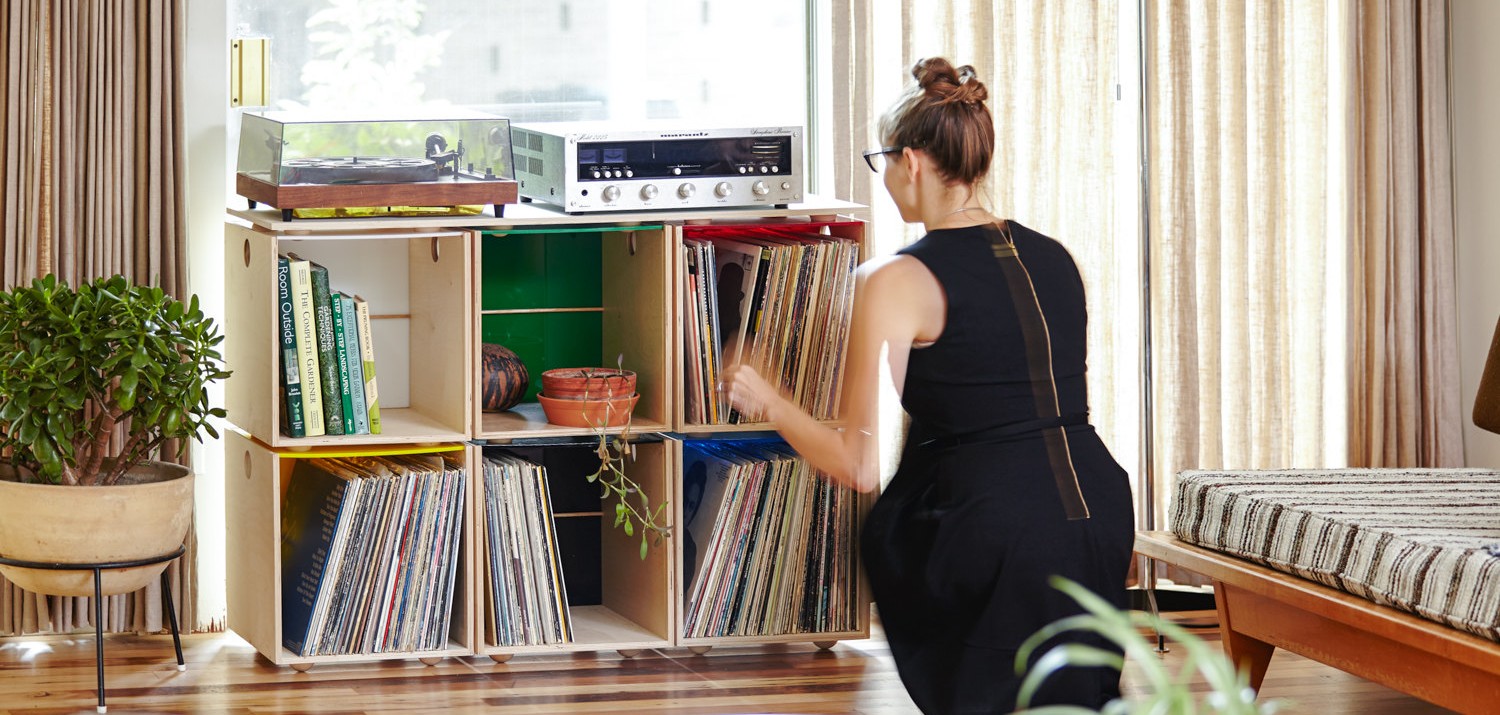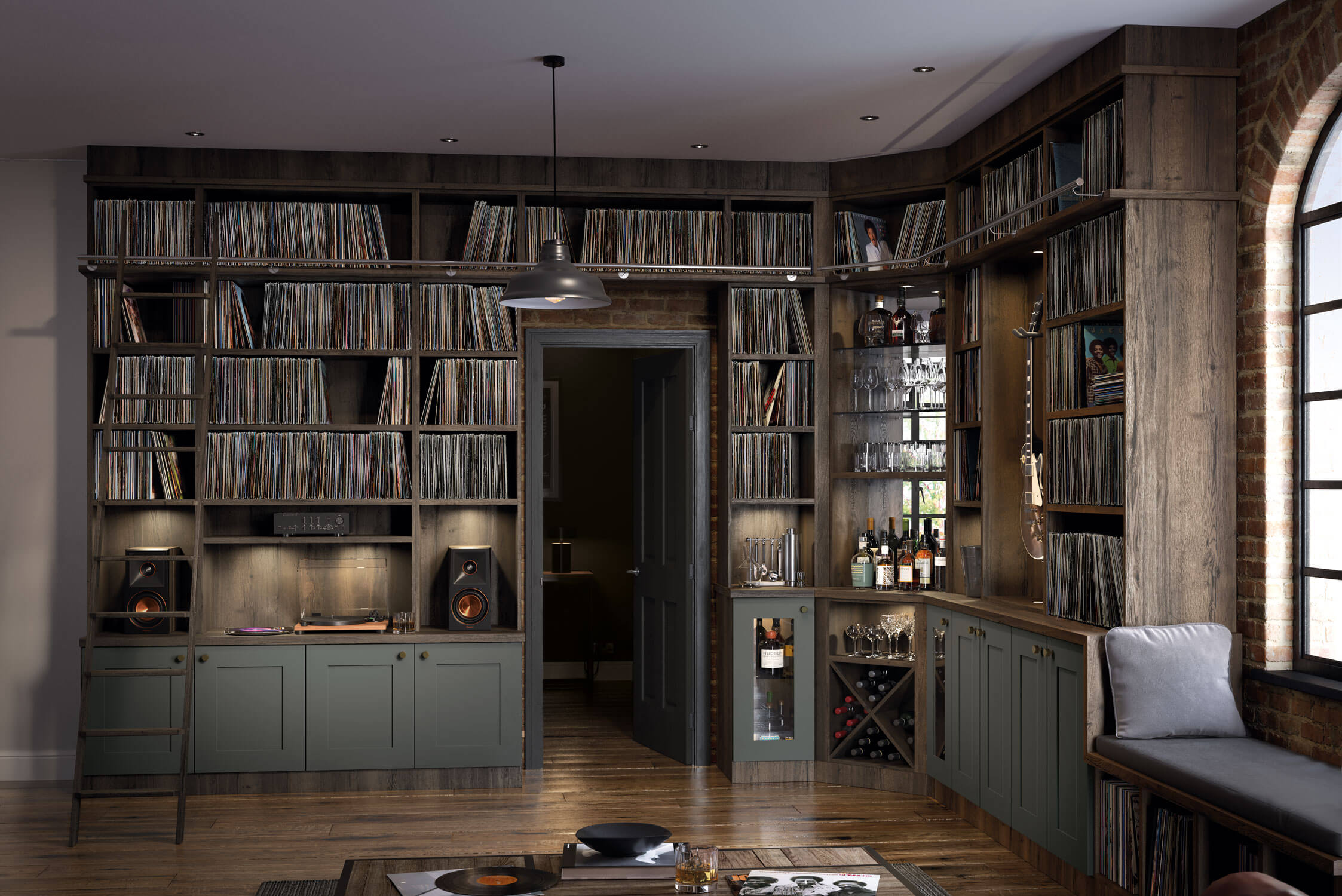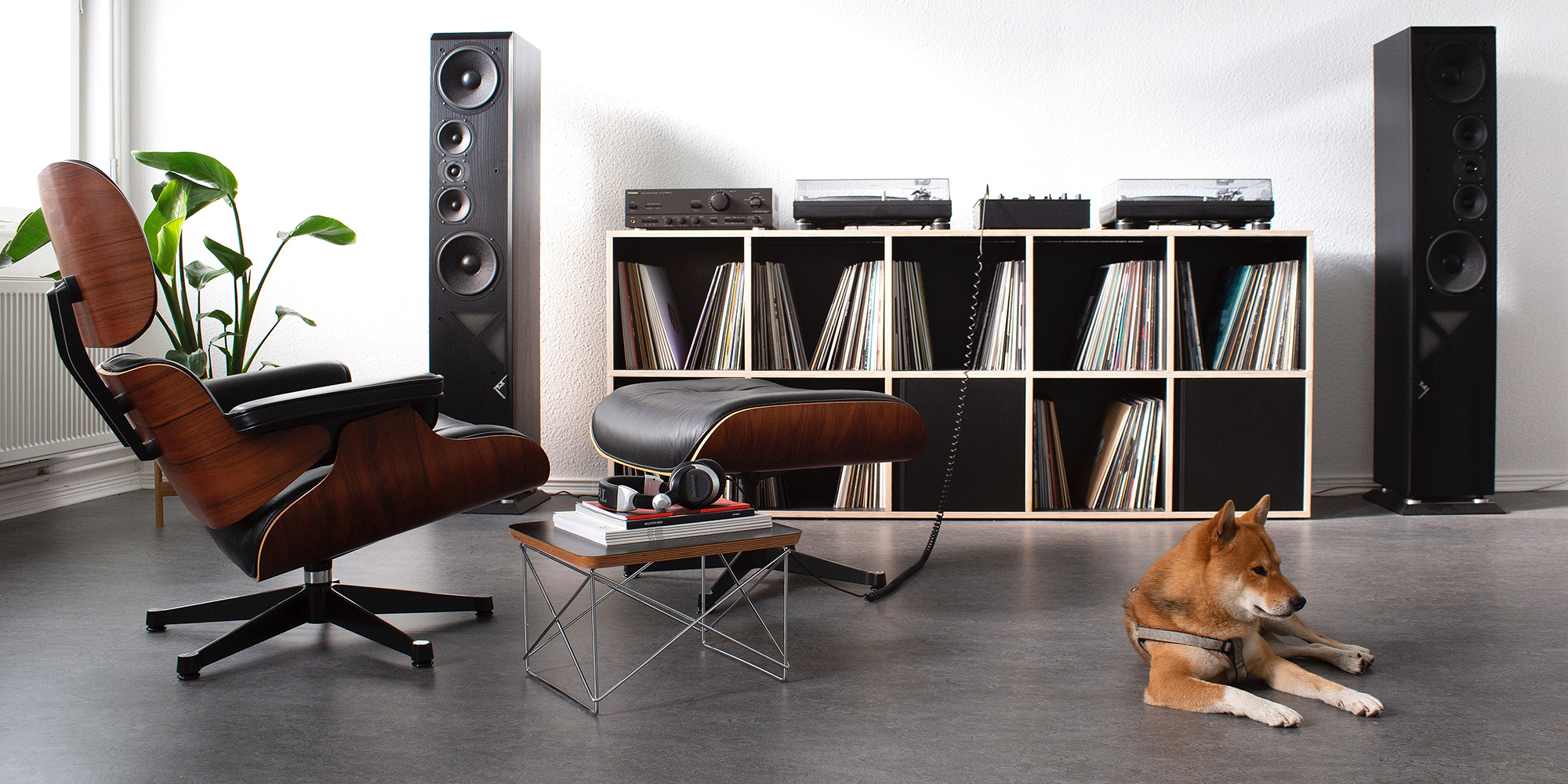In the digital age of streaming and mp3s, vinyl records have emerged as a tangible oasis for audiophiles and music enthusiasts alike. Their resurgence in popularity is a testament to the enduring allure of analog music and the desire for a more tactile connection with our favorite tunes. However, this vinyl revival comes with a responsibility—properly storing vinyl records to ensure their longevity and pristine sound quality. In this comprehensive guide, we’ll delve deeper into the world of vinyl record storage, offering a more extensive exploration of the seven essential tips every audiophile should know.
1. The Intricacies of Vinyl Record Storage
As vinyl enthusiasts will attest, owning and maintaining a vinyl collection is a labor of love. The inherent fragility of vinyl records makes it imperative to understand the intricacies of proper storage. Beyond preserving the inherent sonic warmth of vinyl, it’s about cherishing the artwork, the history, and the potential future value of your collection.

2. Create an Optimal Storage Environment
Creating the ideal storage environment is the first step in ensuring your vinyl records remain in pristine condition. Let’s dive deeper into the nuances of temperature, humidity, and UV protection.
A. Temperature Control: Preserving Form and Sound
Vinyl records are sensitive to temperature fluctuations, which can lead to warping. Maintaining a consistent temperature between 65°F and 70°F (18°C to 21°C) is crucial. Extreme cold can make vinyl brittle, while excessive heat can lead to warping. Thus, it’s essential to avoid storing your records in garages or attics where temperature extremes are more likely.
B. Humidity Management: Guarding Against Mold
Maintaining the right humidity level is equally important. A relative humidity level of 45% to 50% is optimal. High humidity can encourage mold growth, while low humidity can render your records brittle. To achieve and maintain this balance, consider using dehumidifiers or humidifiers as needed.
C. UV Protection: Shielding From Sunlight
Sunlight can be vinyl’s enemy. Direct UV exposure can cause album covers to fade and warp records over time. To protect your collection from the harmful effects of sunlight, store your records away from direct sunlight or use UV-filtering curtains or blinds.
3. The Role of High-Quality Record Sleeves
While the importance of record sleeves was briefly mentioned, let’s delve deeper into the two main types of sleeves and their protective properties.
A. Inner Sleeves: Safeguarding the Vinyl
Inner sleeves are the first line of defense for your vinyl records. The primary purpose of an inner sleeve is to prevent surface abrasions and the buildup of static electricity. Anti-static inner sleeves are highly recommended, as they not only reduce the risk of static buildup but also minimize the chances of attracting dust and debris. For added protection, consider using round-bottomed inner sleeves to prevent seam splits, a common issue with traditional square-bottomed sleeves.
B. Outer Sleeves: Shielding Album Covers
Outer sleeves serve to protect the album covers from wear, tear, and dust. These covers are available in various sizes to accommodate different album formats. Ensuring the right fit is crucial to preventing creasing or bending of your album covers.
4. Vertical Storage: The Preferred Method
The debate between vertical and horizontal storage is a significant one among vinyl enthusiasts. However, there’s a consensus that vertical storage is the preferred method for several compelling reasons.
A. Record Shelving: Designed for Vinyl
Investing in dedicated record shelving units is a wise choice for vinyl storage. These units are explicitly designed with dividers to keep records upright and prevent them from leaning or bending. Proper shelving units also facilitate adequate airflow, which is crucial for preserving the condition of your records.
B. The Role of Spacers
In cases where shelf space is limited, spacers come to the rescue. Spacers, whether cardboard dividers or purpose-built acrylic separators, help maintain the upright position of your records, preventing them from leaning against each other and potentially causing damage.

5. A Clean Collection is a Happy Collection
Vinyl records are notorious for attracting dust and debris. Regular cleaning routines are essential to preserving their sound quality and overall condition.
A. Anti-Static Brush: A Pre-Play Ritual
Before each play, make it a ritual to use an anti-static brush. These brushes are designed specifically for vinyl records and gently remove loose dust and static buildup from the surface, ensuring a clean listening experience.
B. Record Cleaning Solution: For a Deeper Clean
For a more thorough cleaning, especially for older or heavily soiled records, consider using a dedicated record cleaning solution along with a microfiber cloth or a velvet brush. When cleaning your records, it’s essential to follow the grooves in a circular motion to dislodge dirt and grime effectively.
C. Record Cleaning Machines: A Serious Investment
For serious collectors with extensive vinyl libraries, record cleaning machines are a worthwhile investment. These machines employ various cleaning methods, such as vacuum suction or ultrasonic cleaning, to remove dirt and grime from the grooves, ensuring a deeper level of cleanliness.
6. Handle With Utmost Care
Handling vinyl records requires a delicate touch. Mishandling can lead to physical damage, contamination, and loss of sound quality.
A. Gentle Handling
Always handle records by their edges and center labels, avoiding direct contact with the grooves. The natural oils, dirt, and moisture from your fingers can harm the vinyl surface over time.
B. Avoid Overplaying
Repeatedly playing the same record increases the risk of wear and tear. To extend the lifespan of your collection, rotate the records you listen to regularly, distributing the playing time evenly among them.
C. No Stacking
Never stack records on top of each other, even for short periods. The weight can cause warping, and the friction between records can lead to scratches and other damage.
7. Catalog and Organize Your Collection for Easy Access
A well-organized vinyl collection not only enhances your aesthetic enjoyment but also makes it easier to locate and maintain your records.
A. Labeling Record Sleeves
Label each record sleeve with essential information, including the album title, artist, release year, and any special notes about the condition. This practice not only facilitates quick identification but also helps you keep track of the condition of each record.
B. Organizational Methods
Organize your collection based on your preferences—alphabetically by artist, grouped by genre, or organized in any manner that makes it easier for you to find the music you’re in the mood for. This personal touch adds a layer of intimacy to your vinyl experience.
C. Embrace Digital Cataloging
Consider creating a digital catalog of your vinyl collection using spreadsheet software or specialized cataloging apps. This modern approach allows you to access your collection’s details on your computer or smartphone, making it easier to share your collection with others or keep track of your inventory.

Exploring Vinyl Record Storage Options
In the world of vinyl record collecting, the right storage solution is essential to ensure the longevity and quality of your beloved albums. We’ve already discussed the importance of creating an optimal storage environment and the role of sleeves, but let’s take a closer look at various vinyl record storage options. From purpose-built furniture to DIY solutions, there’s a multitude of ways to organize and protect your vinyl collection.
1. Dedicated Record Shelving Units
Description: Dedicated record shelving units are specially designed for vinyl record storage. They often feature dividers or compartments to keep records upright, preventing them from leaning or bending. These units come in various sizes and materials, including wood, metal, and acrylic, allowing you to choose the one that best suits your style and needs.
Advantages:
- Designed specifically for vinyl records.
- Dividers ensure proper organization and prevent records from leaning.
- Various styles and finishes to complement your decor.
Considerations:
- May require assembly.
- Cost can vary depending on the materials and design.
2. Milk Crates
Description: Milk crates have long been a popular choice for vinyl record storage among collectors. These sturdy plastic containers are readily available and offer a simple, no-frills solution. They can be stacked and easily transported, making them a versatile option for both storing and moving your collection.
Advantages:
- Affordable and easy to find.
- Stackable for efficient use of space.
- Durable and can withstand heavy loads.
Considerations:
- Lack dividers, so records may lean or be less organized.
- May not be the most visually appealing option.
3. Vintage Record Cabinets
Description: Vintage record cabinets, often from the mid-20th century, are stylish and functional pieces of furniture designed specifically for vinyl storage. They typically feature multiple compartments for records and a top surface for a turntable and speakers.
Advantages:
- Adds a vintage touch to your decor.
- Provides ample storage for records and equipment.
- Durable and well-built.
Considerations:
- Availability may vary, and finding the right piece can be a treasure hunt.
- Vintage furniture may require restoration or maintenance.
4. DIY Solutions
Description: For those with a knack for DIY projects, creating custom vinyl storage solutions can be a rewarding endeavor. You can design and build your own shelves, crates, or cabinets tailored to your space and style preferences.
Advantages:
- Allows for customization to fit your specific needs.
- Can be a cost-effective option if you have the necessary skills and tools.
- Offers a unique and personalized storage solution.
Considerations:
- Requires time, effort, and woodworking skills.
- The final result may depend on your craftsmanship.
5. Vinyl Record Boxes
Description: Vinyl record boxes are purpose-built containers designed to store records. They come in various sizes, including single LP, double LP, and even larger box sets. These boxes often have reinforced corners and handles for easy transport.
Advantages:
- Ideal for transporting records or taking them on the go.
- Protects records from dust and light.
- Available in a range of designs and materials.
Considerations:
- Not the best solution for long-term storage due to limited capacity.
- Records may not be as easily accessible as with other storage options.

6. Wall-Mounted Racks and Shelves
Description: Wall-mounted racks and shelves are a space-saving and visually appealing option for vinyl storage. They allow you to display your favorite album covers as artwork while keeping your records easily accessible.
Advantages:
- Maximizes floor space and adds a decorative element.
- Quick and easy access to records.
- Various designs to complement different aesthetics.
Considerations:
- Weight capacity and wall mounting requirements need to be considered.
- Dust protection may be limited compared to enclosed storage options.
7. Custom-Built Furniture
Description: If you’re looking for a high-end and tailored solution for your vinyl collection, consider custom-built furniture. This option allows you to work with a craftsman or furniture designer to create a piece that perfectly fits your space and accommodates your collection’s size and layout.
Advantages:
- Fully customizable to your specifications.
- Can blend seamlessly with your existing decor.
- Built to last and crafted with precision.
Considerations:
- Custom furniture can be costly and may require a longer lead time.
- Finding the right craftsman or designer may take some effort.
8. Record Trunks and Flight Cases
Description: Record trunks and flight cases are sturdy, portable storage options designed to protect your vinyl collection during transportation. They often feature foam padding, reinforced corners, and latches for secure closure.
Advantages:
- Ideal for DJs or collectors who frequently transport their records.
- Offers robust protection against damage.
- Some models have wheels for easy mobility.
Considerations:
- May not be the most accessible solution for daily use.
- Limited in terms of aesthetics and decor integration.
In conclusion, vinyl records are more than just a medium for listening to music—they are tangible pieces of art and history. Properly storing and caring for your vinyl collection is an act of devotion to the rich culture and tradition of analog music. By adhering to the guidelines outlined in this extensive guide, you can ensure that your vinyl records remain in pristine
